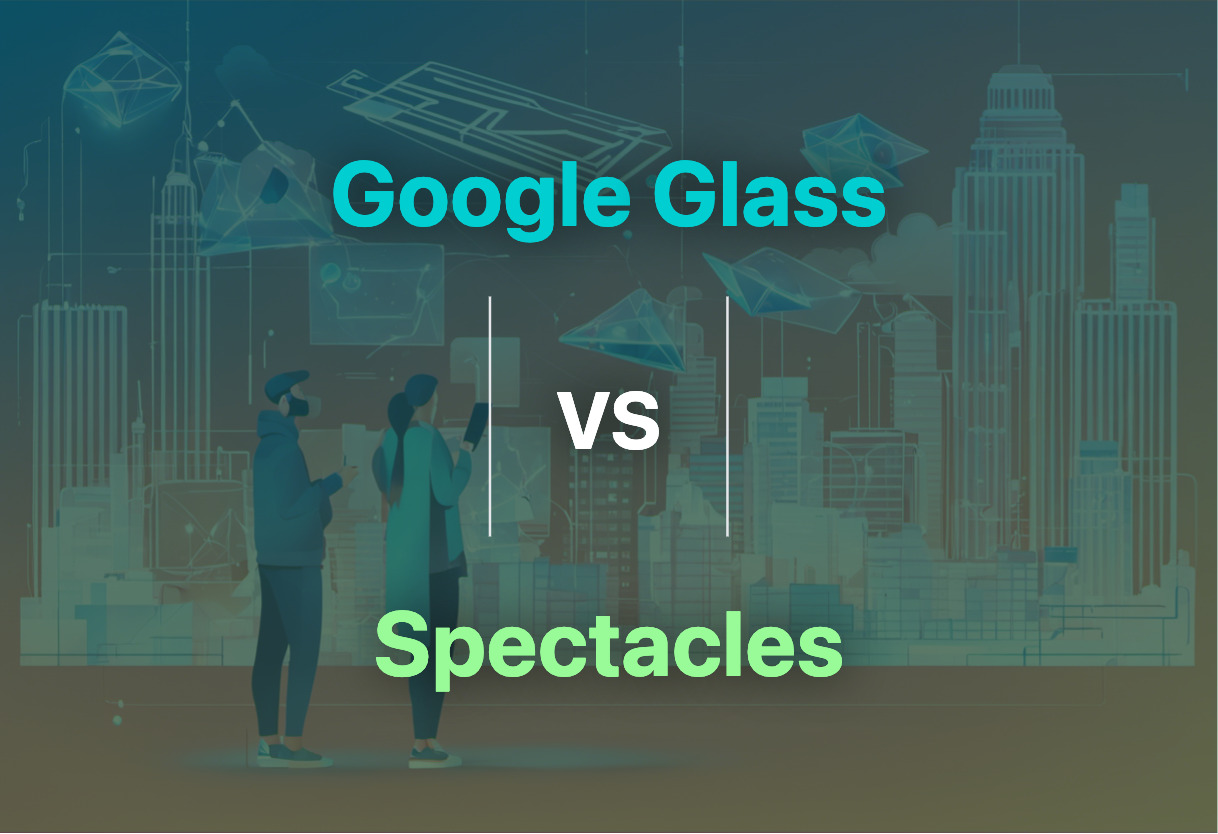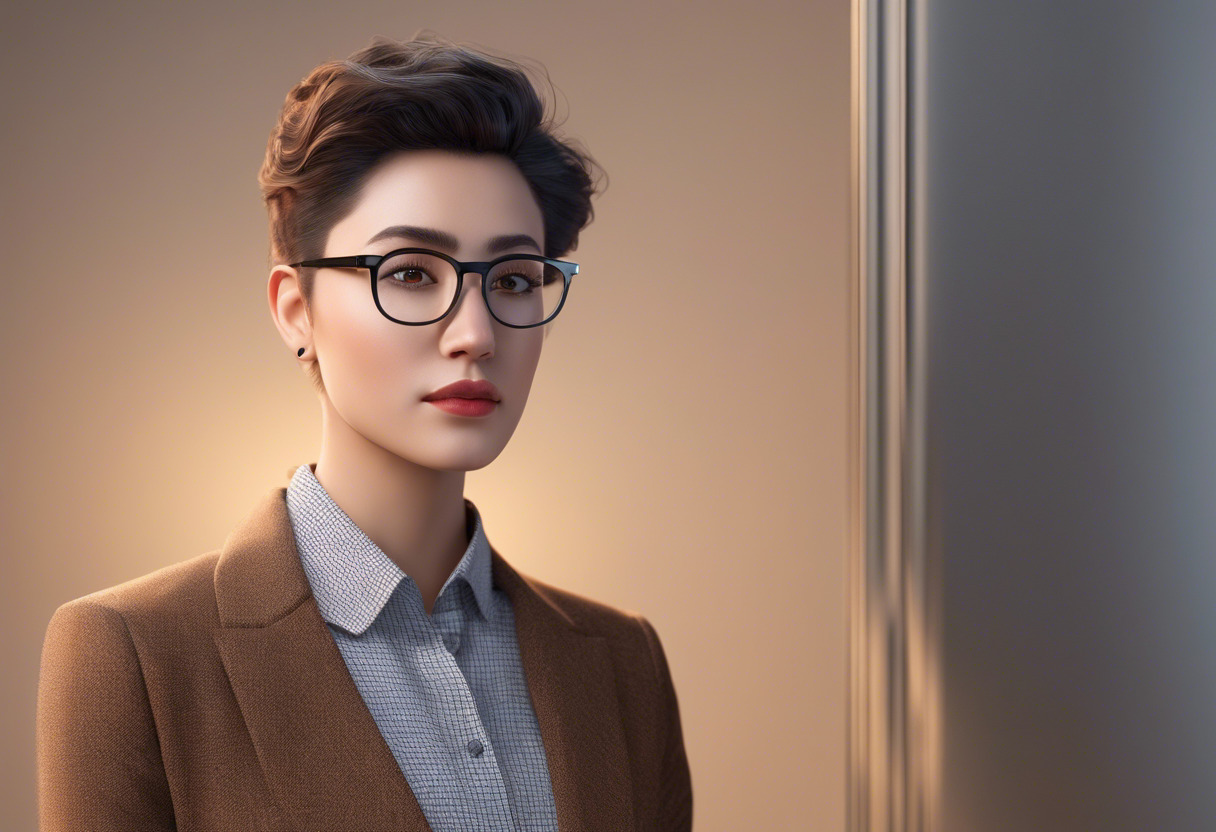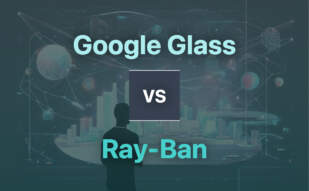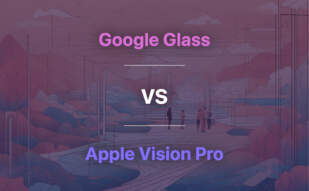When comparing Google Glass and Eyeglasses, tech enthusiasts and professionals especially in factories, warehouses, and hospitals will find Google Glass the superior choice, offering augmented reality, voice-controlled and real-time updates. However, for vision correction tasks, traditional Eyeglasses remain the reliable choice.

Key Differences Between Google Glass and Eyeglasses
- Google Glass is a wearble Android device offering augmented reality, while Eyeglasses are traditional vision correction tools.
- Google Glass displays information visually and integrates with Google services. Eyeglasses do not have such features.
- Google Glass supports voice and motion commands for control. Eyeglasses, being non-technological, do not.
- Google Glass is particularly beneficial for enterprise use, providing time and money savings while augmenting safety. Eyeglasses simply correct vision issues.
| Comparison | Google Glass | Eyeglasses |
|---|---|---|
| Initial Release | 2013 | 13th Century, Italy |
| Type of Device | Wearable Android Device | Optical Aid |
| Function | Provides Augmented Reality Experience | Corrects Vision Impairments |
| Display | Micro-projector on FSC LCOS System | Optical lenses |
| Applications | Photo/Video Capture, Google Search, Directions, Voice/Video Calls | Vision Correction |
| Innovations | Integration with Google Products, AI Interpretation | Bifocal Lenses, Material Evolution, Size Efficiency |
| Commercial Use | Used in Factories, Warehouses, Hospitals | Everyday, Recreational Use |
What Is Google Glass and Who’s It For?
Google Glass catapults us into the future with a wearable, Android-based device that makes augmented reality part of everyday life. Launched in 2013, the device is innovative and versatile, immersing you in experiences through visual, audio, and location-based inputs. In 2019, the Google Glass Enterprise Edition 2 emerged, sculpted specifically for professional use in factories, warehouses, and hospitals.
The system is compatible with professionals craving for cutting-edge technology. The device boasts real-time updates with Google Now, third-party integration with apps like Evernote, and backward compatibility with Google Photos, scaling industrial operational efficiency and safety.

Pros of Google Glass
- Augmented reality experience
- Convenient for professional use
- Supports real-time updates and voice-activated commands
- Supports third-party app integration
- Facilitates photo and video capture
Cons of Google Glass
- Raised privacy concerns
- Project stalled in 2015 over functional issues
- High cost for consumer variant
What Is Eyeglasses and Who’s It For?
Once a status symbol in the Renaissance, eyeglasses have evolved from wooden frames with primitive lenses to smart, fashion-forward frames with high-index plastic lenses. Their journey, beginning in 13th century Italy, is a showcase of human innovation and ingenuity, moulding eyeglasses as much more than a mere instrument of vision-correction.
Today’s eyeglasses cater to a diverse demography, from the fashion-conscious youth to the reading monks, the myopics to the presbyopics. Whether it’s Benjamin Franklin’s brainchild of bifocal lenses tackling presbyopia and hyperopia, or the advent of unbreakable plastic lenses, eyeglasses have transformed the vision-landscape seamlessly across centuries.

Pros of Eyeglasses
- Corrects various vision impairments
- Cost-effective solution to visual issues
- Durable, with plastic lenses being break-resistant
- Wide variety available in stylish designs
- Tailored glasses available for specific needs, like bifocals
Cons of Eyeglasses
- Can be uncomfortable or inconvenient in certain situations
- May cause discomfort on nose/ears with prolonged use
- Requires maintenance and regular cleaning
The Finishing Line: Google Glass vs Spectacles
The hour of reckoning is upon us. Shall we choose the techno-magical Google Glass or retreat to the tried-and-true Spectacles? Let’s delve into the audience-specific scenarios.
Cutting-edge Tech Enthusiasts
For technophiles always chasing the bleeding edge, Google Glass is the undisputed winner. A wearable Android device, it blends AR with real-time data, voice and motion control. Google Maps integration and Google Hangouts sharing might as well clinch the deal.

Extended Use Professionals
In professional spheres like factories, warehouses, or hospitals, Google Glass Enterprise Edition 2 reigns supreme. It promotes safety and improves workflow, offering real-time updates and third-party app integration. Rest assured, this is the beacon of future industry standards.

Allegiant Traditionalists
Stalwarts of age-old tradition might find the Spectacles an unparalleled choice. Their redesign over centuries, visions correcting prowess, and the renowned bifocal innovation by Benjamin Franklin guarantee a perfect balance of functionality and familiarity.

In the showdown of Google Glass vs Spectacles, Google Glass offers an advanced, interactive AR experience, while Spectacles provide a reliable optical solution. Choose the one that aligns with your unique lifestyle requirements.
Patrick Daugherty
Content writer @ Aircada. Merging AR expertise with a love for late-night gaming sessions.





